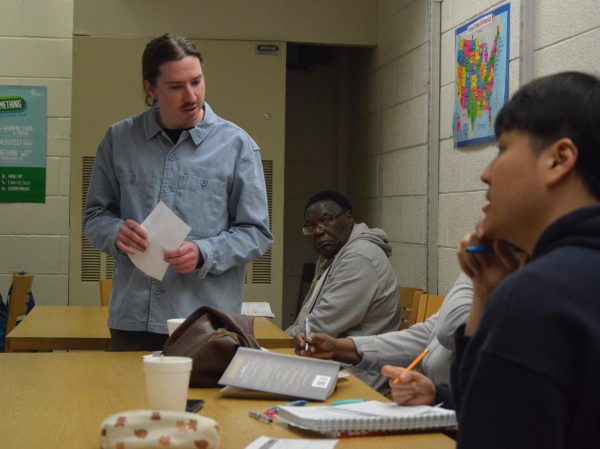Community and individual action is the most effective way to reduce climate change
December 17, 2021
The impact of global warming on the lives of young people in the modern world is extremely noticeable. Mental and physical health are negatively impacted, and there is a decreased desire to have children due to the current state of our planet.. The yearly Global Carbon Budget report shows that we have about 11 years left to avoid the worst possible degree of damage.
Everyone has a responsibility to do what they can for the planet, and students are no exception. High school students must consider taking steps to lead greener lives, such as limiting paper use and using cleaner transportation to get to school.
While being eco-friendly is undoubtedly crucial, something that deserves more attention is the responsibility school districts and administrations hold as parts of the community in mitigating the very serious effects of global warming. The use of paper, for example, accounts for 33-40 percent of global deforestation.
In just one day, the average high school could consume as many as two thousand sheets of paper, used for anything from worksheets to report cards. This translates to over 320 thousand sheets of paper used per year. Not only is this a waste of natural resources, but paper is also very expensive. On average, schools spend around $16,000 on paper per year. These funds could be reallocated to other necessary areas, such as tools to facilitate more sustainable learning.
Fortunately, online learning platforms such as Midtown’s recently adopted Schoology and Google Classroom have allowed more classwork to be completed virtually, decreasing the use of paper. The Digital Bridge, an APS technology program, provides all students with a school-issued Chromebook and Wi-Fi hotspot, which makes these platforms accessible to all students, regardless of their financial status.
However, paper is still used by a large number of teachers. Waste goes hand in hand with this –- anyone walking down the halls can observe papers balled up or thrown in trash cans instead of being properly recycled. A further reduction of paper use and higher encouragement of recycling has the potential to be very beneficial.
The climate change efforts of Midtown cannot end there. Energy use, especially waste, is another area that needs to be addressed. Within the United States, there are about 17,450 kindergarten through twelfth grade school districts. Collectively, they spend over $6 billion per year on energy, which averages out to just under $344,000 per individual district.
Schools need a lot of energy in a 21st-century environment — whether for computers, classroom lights or heating systems. However, according to Energy Star, a program run by the U.S. Department of Energy and the Environmental Protection Agency, up to 30 percent of a district’s energy use is either unnecessary or poorly managed.
While likely not on purpose, such waste does occur. Classroom lights are left on when natural daylight is sufficient enough for students and staff to see. Also, devices are left charging long after their battery is full and smart boards are left on even when they aren’t needed for instruction.
This waste can be reduced by making teachers, students and the administration more aware of small instances of misuse that can cause far bigger issues. Not only will this be beneficial for the environment, it will save money. Districts could save as much as $103,200 based on yearly spending numbers if they cut back on energy use.
Another commonly-held viewpoint is that governments, rather than smaller communities and individuals, hold responsibility for protecting the environment. The issue is that governmental policies can be difficult to enforce on a wide scale, meaning compliance with climate-change policies can be uneven.
This makes community-based action a necessity. Schools, as centers for education and change in the community, are the perfect starting points for this. In the end, the message is simple: current local climate change prevention efforts need to be increased so Earth can continue to sustain humanity. After all, there is no planet B.











